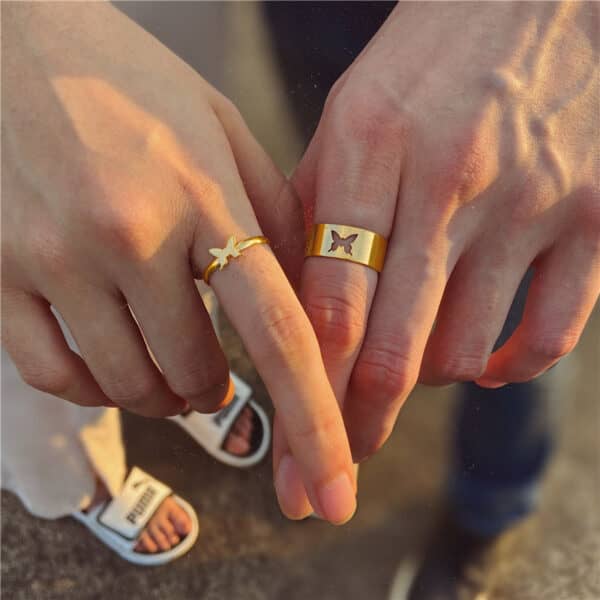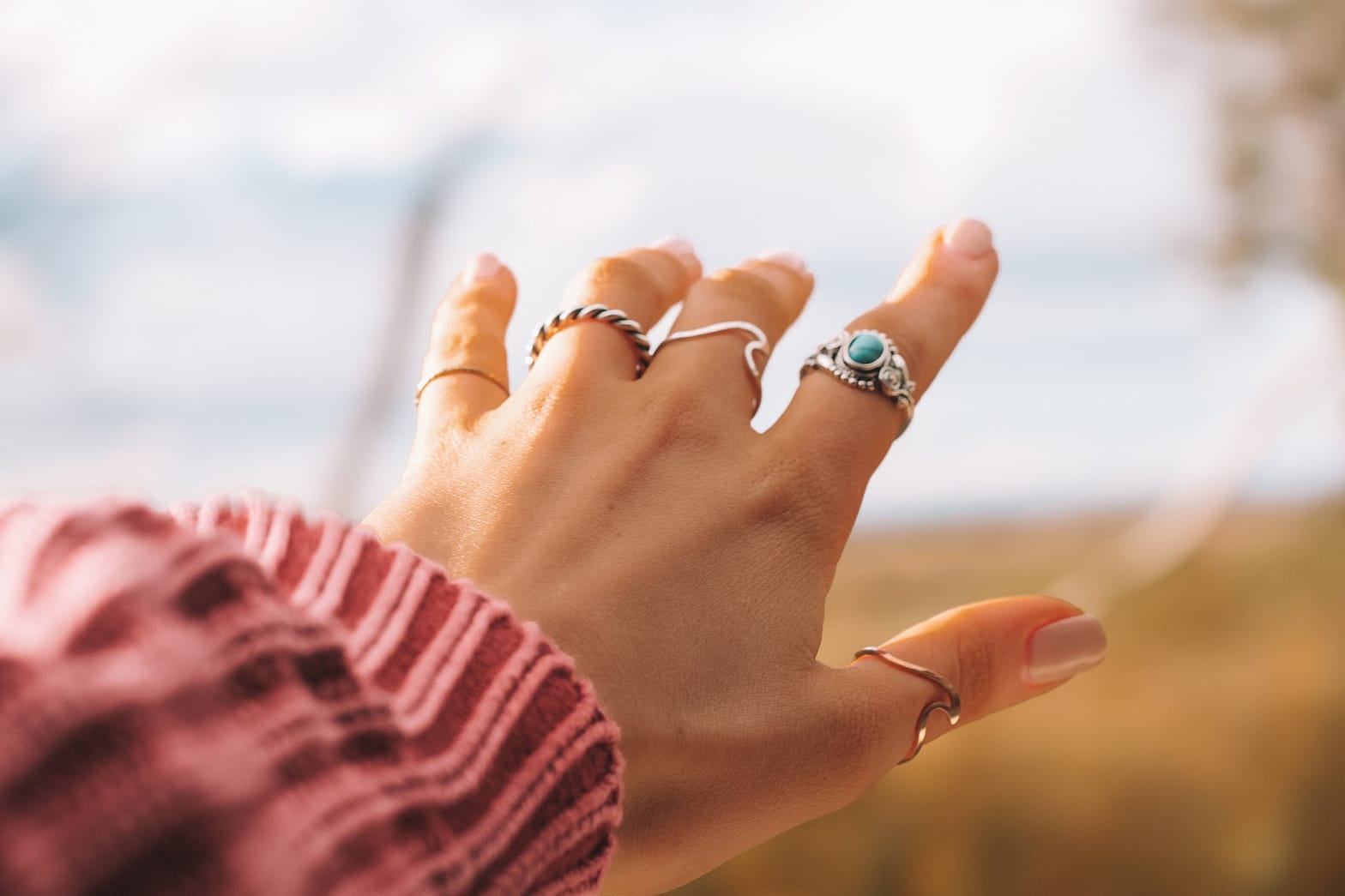Have you ever wondered what the symbolism of rings is beyond engagements and weddings? Rings have been used for centuries to express sentiment and convey meaning, but what does it all mean? In this article, we’ll explore the symbolism of rings and discover the deeper meanings behind them. Whether you’re looking for a ring to symbolize your love, or just curious about the history of rings, you’ll find the answers you’re looking for here.
1. The History of Rings Symbolism
The symbolism of rings has a long and varied history which stretches back many centuries. It is thought that the first rings were made of grass, wood, or bone, and were used as part of primitive ceremonies or as a symbol of status. Ancient Egyptians used rings to signify eternity and as a symbol of marriage. Later, rings were used as a sign of authority and power by the Romans and Greeks. Across Europe, rings were used as a symbol of loyalty and love, and were often given as gifts to mark important occasions.
In the Middle Ages, rings were used as a symbol of the Church and to signify loyalty to a particular order. Later, in the Renaissance period, rings were given as gifts to signify engagement or marriage. In the modern era, rings are used as a symbol of commitment, love, and friendship, and are a popular choice of jewellery.
In some cultures, rings are used to signify spiritual or religious beliefs. For example, in Hinduism, the ring is a symbol of eternity, while in Buddhism, rings are often used as a symbol of protection and spiritual strength. Rings can also be used to signify membership of a group, such as a fraternity or sorority.
Rings have long been associated with symbolism and meaning, and have been used to mark important occasions, express love, and signify loyalty. Today, rings are still used to mark engagements and weddings, but also as a symbol of friendship, commitment, and love.

2. Significance of Rings in Different Cultures
Rings have been used as a symbol of love, commitment, and status for centuries. However, the significance of rings varies across different cultures. In ancient Egypt, rings were seen as a symbol of eternity, with the circular shape representing the unending cycle of life. In India, rings were believed to have healing powers and were worn on specific fingers to promote physical and mental wellbeing.
In many African cultures, rings are worn to signify wealth and status. The larger and more elaborate the ring, the higher the person’s social standing. In some Native American cultures, rings were used as a form of currency and were traded for goods and services.
In Chinese culture, wedding rings are not traditionally exchanged. Instead, couples exchange bracelets or necklaces as a symbol of their commitment. In Japan, rings are worn on the fourth finger of the right hand, rather than the left, as it is believed that a vein in that finger leads directly to the heart.
Understanding the significance of rings in different cultures can help us appreciate the diversity of human traditions and beliefs. It also highlights the importance of respecting and valuing cultural differences.

3. Types of Rings and their Symbolic Meanings
There are various types of rings, and each one has a unique symbolic meaning. Here are three types of rings and their symbolic meanings:
- Claddagh Ring: This traditional Irish ring features two hands holding a heart, topped with a crown. The hands represent friendship, the heart represents love, and the crown represents loyalty. Claddagh rings are often given as a symbol of love, friendship, or even as a wedding ring.
- Mood Ring: Mood rings were popular in the 1970s and have since made a comeback. The ring contains a liquid crystal that changes colour based on the wearer’s body temperature, which is said to reflect their emotional state. While not scientifically accurate, mood rings can be a fun way to express oneself and make a fashion statement.
- School Ring: Also known as a class ring, this ring is typically given to high school or college graduates. The ring usually features the school’s crest, and sometimes the student’s name, year of graduation, or degree. School rings symbolize achievement, pride, and connection to one’s alma mater.

4. The Role of Rings in Religion
Rings have been used as symbols in various religions for centuries. In many religions, rings are considered sacred and are used in religious ceremonies and rituals.
In Christianity, rings are used in marriage ceremonies to symbolize the couple’s commitment to each other and to God. The circular shape of the ring represents eternity and the unending love between the couple. In addition, many Christian leaders wear rings as a sign of their authority and position within the church.
In Hinduism, rings are often used in religious ceremonies and are believed to have healing properties. Some Hindus wear rings with specific gemstones that are believed to have spiritual and healing powers.
In Buddhism, rings are sometimes used as a reminder of the teachings of the Buddha. Some Buddhist rings have inscriptions of mantras or other sacred texts.
In Islam, rings are sometimes worn by men as a symbol of their faith. These rings are often inscribed with religious phrases or symbols.
Rings also play a role in other religions such as Judaism, Sikhism, and Wicca.
5. Rings and their Symbolic Representation of Love
Rings are often associated with love and commitment, but did you know that each type of ring can have its own symbolic representation of love? Here are five types of rings and their meanings:
- Engagement rings: These are traditionally given as a symbol of a couple’s commitment to marry. The ring is typically worn on the ring finger of the left hand.
- Wedding rings: These are exchanged during the wedding ceremony and represent the couple’s commitment to each other. They are traditionally worn on the ring finger of the left hand.
- Eternity rings: These are often given as a gift to celebrate a milestone in a relationship, such as an anniversary or the birth of a child. The ring is usually encrusted with diamonds or other precious stones to represent the eternal nature of the couple’s love.
- Promise rings: These are given as a symbol of a promise to remain faithful or committed to the relationship. They can be given at any stage of a relationship.
- Claddagh rings: These are traditional Irish rings that feature two hands holding a heart with a crown on top. They represent love, loyalty, and friendship.
Understanding the symbolism behind different types of rings can add an extra layer of meaning to your relationships. If you’re considering giving a ring as a gift, be sure to research the different types and their meanings to find the perfect one for your situation.
6. Rings and their Role in Commemorating Special Events
Rings are not just for engagements and weddings, they can also be used to commemorate special events in a person’s life. Whether it is a birthday, a graduation, or a promotion, rings can be a symbol of celebration and achievement. They can also be used to celebrate the life of a loved one who has passed away, or to symbolise a special bond between two people.
Commemorative rings come in a variety of styles, from simple silver bands to intricate diamond-studded pieces. They can be engraved with a special message or date, or set with a precious stone. Some people choose to have a custom ring made to commemorate a special event in their life.
Rings are an ideal way to remember a special moment or person, and to mark a significant event. They are also a great way to show appreciation for someone who has achieved something special. A ring can be a beautiful reminder of a special occasion and a symbol of the bond between two people.
Conclusion
Rings, throughout history, have been more than just symbols of engagements and weddings. Their significance spans across various cultures and time periods, each attributing unique meanings and sentiments to these circular pieces of jewelry. From the ancient Egyptians, who saw rings as symbols of eternity, to the Romans and Greeks who used them as signs of power and authority, rings have always held profound symbolism. Different cultures have their own interpretations and traditions related to rings, emphasizing love, commitment, status, and even well-being.
Moreover, rings play a pivotal role in religious practices, symbolizing sacred commitments, teachings, and authority. Beyond the realms of love and marriage, rings also commemorate special events, achievements, and milestones in one’s life. Whether it’s an engagement ring, a class ring, or a Claddagh ring, each carries its own story and meaning. In essence, rings are not just ornamental but are deeply intertwined with human emotions, beliefs, and milestones, making them timeless tokens of memories and sentiments.

